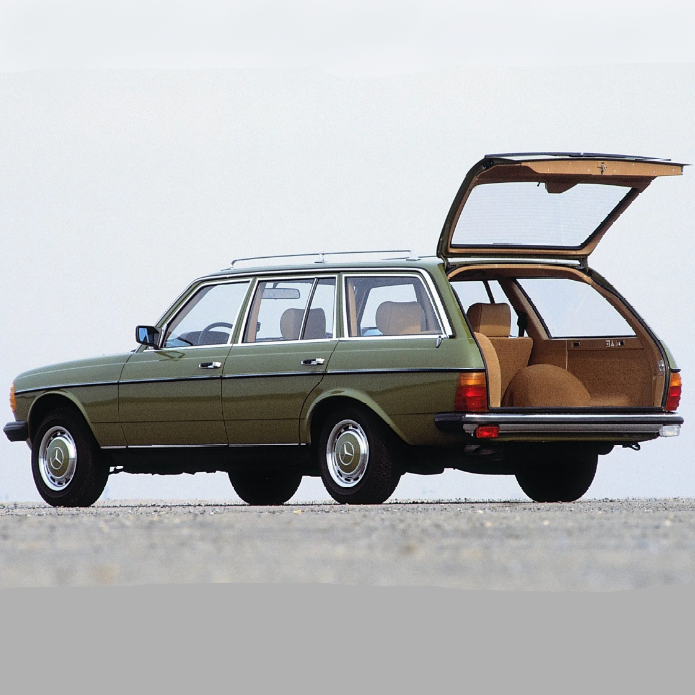Two sources:
Years produced: 1946-1981 Original starting price: $6,525 (in 1951, first available MSRP) Powered by a four-cylinder engine, this Jeep wagon was the first all-steel wagon. Jeep actually had to use a three-tone paint job to simulate the “woody” look, and that vehicle’s faux wood grain, tailgate, and vast cargo space set the tone for all wagons to come. “Chrysler’s PT Cruiser offered exterior wood, but it was fake, and the Lincoln Blackwood — their ill-fated luxury truck — also had exterior wood,” Kaufman says. “At the Chicago Auto Show, to celebrate 35 years of building minivans, Chrysler did bring out a first-generation Plymouth Voyager in gold with wood paneling.” While wood grain was lovely, the four-wheel drive added in 1949 was the first hint at Jeep’s SUV future.
1946-1965 WILLYS WAGON
AMERICA’S FIRST ALL-STEEL STATION WAGON America’s first all-steel station wagon debuted in July 1946 as the model 463 Jeep® Station Wagon and featured a three-tone paintwork that simulated the “woodie” look. The no-maintenance all-steel utility vehicle was not prone to weathering, peeling or squeaks like the old style “woodies”. The Wagon’s fold-down tailgate hatch was ahead of its time and can be credited with the origin of the “tailgate party”.
Most station wagons of the day could carry 4x8 feet sheets of plywood horizontally—but only Willys could store them vertically as well. A wash-out interior could be "cleaned almost as easily as a kitchen sink! “ Consumer Reports October 1950 issue stated, "The Willys Station Wagon, used as it is intended to be used, has no equal in its field… It is a working car and it does its work well.”
The Willys Wagon was also available in commercial delivery formats—Sedan Delivery, Panel Delivery, or Utility Delivery — with enclosed back sides and vertical rear doors.
When four-wheel drive was added in 1949, the Willys Wagon became the forerunner of the Grand Cherokee (WK). The Brooks Stevens designed Wagon was in productionnearly 20 years—longer than any other contemporary American automobile of its day. source

